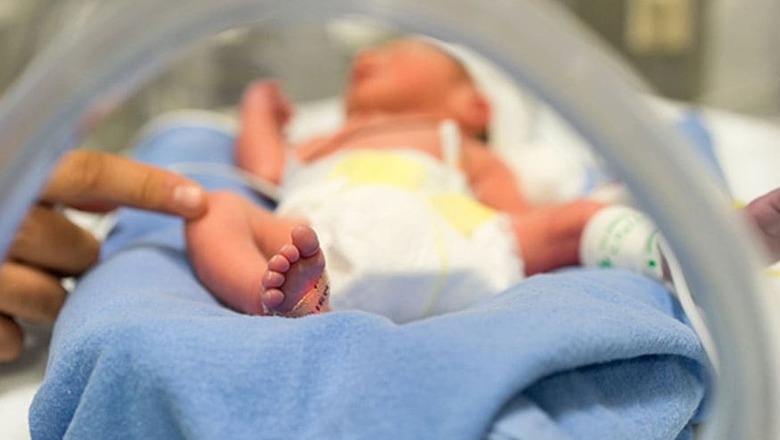
views
Children of obese women are more likely to be afflicted by major birth defects, including malformations of the heart and genitals, according to a study published on Thursday.
The fatter the mother, the higher the risk, it found.
"We found that risks of major congenital malformations in offspring progressively increase with maternal overweight and severity of obesity," researchers wrote in The BMJ medical journal.
"Thus, efforts should be made to encourage women of reproductive age to adopt a healthy lifestyle and to obtain a normal body weight before conception."
According to research published last year, the number of women aged 18 and older classified as severely obese, doubled from about 50 million to 100 million in just 10 years from 2000.
It warned that if current trends continue, one in five women will be obese, and one in 10 severely obese, by 2025.
People are divided into weight categories based on their Body Mass Index (BMI) -- a ratio of weight-to-height squared.
Under the World Health Organization (WHO) standard, a BMI of 18.5-24.9 is normal, 25-29.9 overweight, 30-34.9 moderately obese, 35-39.9 severely obese, and anything over 40 morbidly obese.
For the new study, researchers used data on more than 1.2 million births registered in Sweden from 2001 to 2014.
They gathered information on major congenital malformations, also known as birth defects, and compared this to the BMI of the mother at the time she gave birth.
Just over 43,500 of the children studied had a major malformation, the researchers found.
The most common was a heart defect, followed by malformation of the genital organs, the limbs, the urinary system, the eye, digestive system, facial clefts and nervous system defects of the spine or brain.
Among the offspring of mothers of normal weight, as well as underweight ones, the rate of congenital malformation was about 3.4 percent, the researchers found.
This rose to 3.5 percent for children of overweight women, 3.8 percent for obese ones, 4.2 percent in the severely obese category and 4.7 percent for the morbidly obese.
The risk was higher for boys than for girls.
The study took into account other potential risk factors such as maternal smoking or drinking, socio-economic status, diabetes, the use anti-epileptic drugs, and vitamin deficiency.
The findings "underline the importance of having a maternal BMI in the normal range before pregnancy," the study authors said.
Losing weight after conception would likely be too late, they said, as embryonic organ formation occurs within the first eight weeks.




















Comments
0 comment